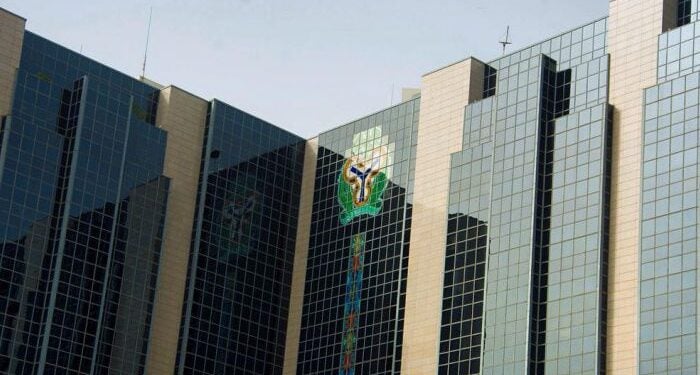 Banks, especially those with heavy government deposit exposure, may need to find alternatives to drive private sector funds into their coffers, as the Monetary Policy Committee of the Central Bank of Nigeria introduced a 75 per cent Cash Reserve Ratio on non-Treasury Single Account deposits.
Banks, especially those with heavy government deposit exposure, may need to find alternatives to drive private sector funds into their coffers, as the Monetary Policy Committee of the Central Bank of Nigeria introduced a 75 per cent Cash Reserve Ratio on non-Treasury Single Account deposits.
CBN Governor Olayemi Cardoso, while reading the communique at the end of the two-day meeting, said the introduction of the 75 per cent CRR on non-TSA public sector deposits was to enhance liquidity management.
Cardoso noted that despite the consistent deceleration in inflation, the MPC had observed the persistent build-up of excess liquidity in the banking system, resulting largely from fiscal releases emerging from improved revenues.
TSA balances are revenues, receipts, and payments of ministries, departments, agencies, parastatals, and other institutions of the Federal Government that are warehoused directly with the CBN, while Non-TSA deposits represent state and local government funds typically maintained with Deposit Money Banks.
Like the CBN pointed out, these balances tend to swell after Federation Account Allocation Committee distributions, injecting liquidity into the system with effects for FX stability and inflation.
Commenting on the development, analysts at Afrinvest said that non-TSA government deposits, particularly FAAC allocations to state and local governments, have historically provided a sizable pool of cheap deposits for commercial banks.
“Based on anecdotal evidence over the past three years, episodes of naira depreciation often coincided with periods immediately following FAAC disbursements into the banking system. Since state and local government shares are immediately available on banks’ balance sheets, a possible link exists between FAAC flows and exchange rate volatility. By sterilising 75.0 per cent of such balances, banks would need to double down on their effort to mobilise cheap capital from the private sector,” stated their weekly report. “Banks with heavy government deposit exposure may face near-term margin pressures.”
Speaking with The PUNCH, the Chief Executive Officer of CFG Advisory, Tilewa Adebajo, agreed that curbing excess liquidity was at the heart of the introduction of the 75 per cent CRR on non-TSA deposits.
Adebajo pointed out that for the country to move from stability to growth, the government needs to curb its spending.
He said, “One of the things that I’m happy about is that the MPC has increased the CRR for non-TSA deposits to 75 per cent. The Minister of Finance and Coordinating Minister of the Economy has now been given the powers to be able to approve spending, and working with the Central Bank, we can see how they can curb that (excess liquidity).
“If you discount food and energy inflation, which makes up core inflation, you will see the driver of core inflation has been fiscal spending, and this move, I think, is very positive because there are a lot of government deposits outside of the Treasury Single Account, and I think it is important that liquidity is mopped up to control inflation. With this mopping up, hopefully, we will put fiscal spending in check and be able to sustain the downward trend in inflation. Also, because of the high interest rate, not many people are borrowing, and that liquidity is looking for somewhere to go. With this limit, it will go back to the CBN to sustain the downward trend in inflation and to begin to hope for a high growth rate.”
He added that despite the hefty 75 per cent CRR on non-TSA deposits, banks can enjoy some relief as the CRR for commercial banks has been adjusted to 45 per cent from 50 per cent.
“They have all our deposits now at 45 per cent CRR,” he stated.
Adebajo went on to assert that until inflation gets to 12 per cent or below, Nigerians may not feel the impact of the deceleration. He stated, “The target is that we should get to 12 per cent inflation. If Nigeria is at 12 per cent inflation, our economy would grow at eight per cent or more, and that is what we need on a sustainable basis.”
CardinalStone, in their report following the MPC’s decision, said that the committee had struck a hawkish note despite cutting the benchmark rate by 50 bps to 27 per cent.
“Our estimates suggest that as of end-2024, Non-TSA balances accounted for 1.6 per cent of the broad money supply (M3) and were equivalent to 1.3x state and local governments’ FAAC receipts in December 2024. This reduces the risk that large FAAC-related inflows will drive FX demand pressures at the parallel market, as outflows are expected to be more gradual and linked to actual expenditure patterns.
“For the banking system, the impact should be a function of the treatment of the new CRR on non-TSA deposits (e.g., applied on total deposits as is the case with regular CRRs or focused only on new deposits), with the CBN expected to provide more clarity on operational dynamics,” said the experts.
Overall, the market watchers contend that the decisions of the MPC underscore a delicate balancing act of loosening just enough to support growth momentum, showing confidence in the decelerating inflation, while tightening around vulnerable liquidity channels to safeguard price and foreign exchange stability.


